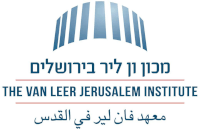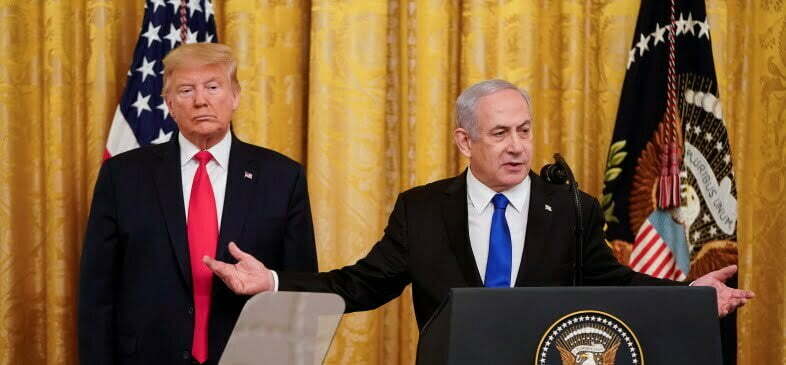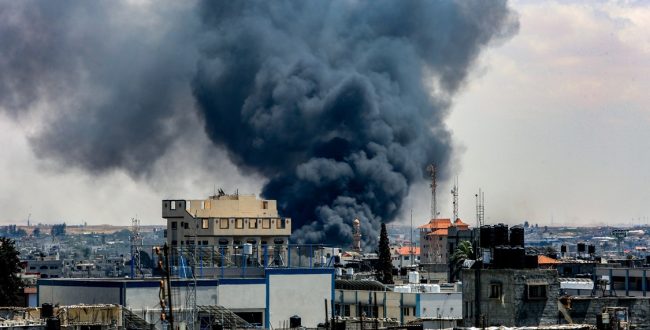The Israeli right-wing, as well as the radical Israeli left-wing, have both claimed that presentation of peace plans are mere spectacles, which feed the ego needs of various political leaders to take place in “peace celebrations” at luxury hotels around the world. They claim and that the peace plans presented at such events are disconnected from reality, and cannot impact the complex reality of the Israeli-Palestinian conflict. Indeed, the peace plans that have been presented over the past two decades have barely made an impact on the lives of Israelis and Palestinians: the Arab Peace Initiative, the Road Map to Peace, the Annapolis Process, and the initiative of Secretary of State John Kerry, were never implemented and did not improve the lives of Israelis or Palestinians. Although each plan made its own conceptual contribution, none of them had a substantial impact on reality.
The lack of impact of peace plans illustrates a central question in political discourse analysis – does language only represent reality, or can it change reality? There can be no doubt that certain peace plans have illustrated that words can change reality. For instance, UNSC Resolution 242 resulted in the acceptance of the principle of “land of peace”, the Camp David Accords lead to diplomatic relations between Israel and Egypt and the removal of the settlements from the Sinai Peninsula, and the Oslo Accords lead to the establishment of the Palestinian Authority and the withdrawal of the IDF from Palestinian cities.
As I illustrated in a study that examined how political actors interpret peace documents, one of the reasons that the aforementioned peace plans did not impact reality was that they tended to utilize evasive language, which enabled a range of interpretations resulting in each side “digging in” to its positions.
Following the publication of “the Deal of the Century”, it is worthwhile to consider whether the plan will be discarded to the dustbin of history in a number of months, due to its one-sided nature, whose main purpose is to empower Netanyahu in the lead up to elections, while strengthening Tump’s standing among the American Evangelical public, or whether the peace plan will actually impact Israeli-Palestinian reality.
At the unveiling of the plan on January 28th, 2020 at the White House, we were witness to most of the elements of a successful media event – the very spectacle that is often viewed as disconnected from reality. The event was filled with pathos, prestige, tradition, and a sense of hope towards reconciliation between conflicted nations, as is customary at such events. The entrance of Trump and Netanyahu to the auditorium, accompanied by stately military music, was reminiscent of a bride and groom marching towards a wedding canopy towards a lifelong partnership.
Unlike past events in which peace plans were unveiled, from the Camp David Accords to the Annapolis Process, at this event, we were not witness to the image of an Israeli leader, an Arab leader, and between them, an American mediator, but only to and image of the President of the United States and the Prime Minister of Israel. The central visual of this event reflected a different reality than that of previous festive peace events – on this occasion, we were not witness to a mediator unveiling a peace plan that is meant to bridge between the positions of two conflicted parties, rather to a superpower siding with the rejectionist positions of the stronger side of the conflict in order to strengthen the standing of the president of this superpower vis-à-vis specific domestic audiences. President Trump’s speech only served to bolster the unilateral nature of this image. Although he utilized most of the well-worn clichés of peace-seeking speeches, his narrative adopted the right-wing Israeli stance on all major issues, including Israeli security control over the entire territory, exclusive Israeli sovereignty over Jerusalem, and recognition of Israeli annexation of significant territory.
This approach illustrates a complete disconnect between the meanings of the terms “peace plan” and “mediation”, and the spectacle to which we were witness in Washington. Political discourse studies have illustrated how political actors exploit the term “peace” to achieve unilateral objectives, such as the appearance of moral superiority and threat construction; however, the presentation of “the Deal of the Century” as a peace plan, despite its real purpose being authorization of Israeli annexation of all of the settlements and open territory in the Jordan Valley, is a new plateau in the cynical use of peace terminology to advance aggressive goals. It serves as a diplomatic version of the word laundering described by Orwell in 1984, in which the Party adopted the slogan: “War is peace, freedom is slavery, ignorance is strength.”
The Trump plan empties the word “peace” of its meaning and content, turning into a “deal”. He argues that this plan is different from its predecessors, as it proposes “fact-based remedies”. Indeed, his plan is based on facts, such as the fact that the Israeli government is not interested in returning to the internationally recognized borders of the state approximately 700,000 settlers (including East Jerusalem); or the fact that in the balance of power, Israeli is the most powerful regional actor; or the fact that Israel has controlled East Jerusalem and its Holy Sites for over 50 years. As such, the Trump plan is indeed based on facts, and, maintains that these facts do not need to change. In other words, “the Deal of the Century” proposes accepting the given situation – a reality of injustice and control of one nation by the other – and labelling it “peace”. Thus, according to Trump’s approach, the function of language in diplomatic contexts is not to attempt to change reality, but only to describe it and to place upon it a different label, in our case – the label of peace.
When a “mediator” calls an abnormal reality “peace”, it enables the stronger side to take steps that will not only describe reality, but also exploit this “peace” in order to deepen its control and occupation of the other. If the Israeli government decides to apply sovereignty over the settlements and the Jordan Valley, it will be exceedingly difficult to “turn back the clock”. In the reverse of the slogan from 1984, “peace” will become “war” and the “Deal of the Century” will impact reality for the worse, binging another century of conflict to the region.


















